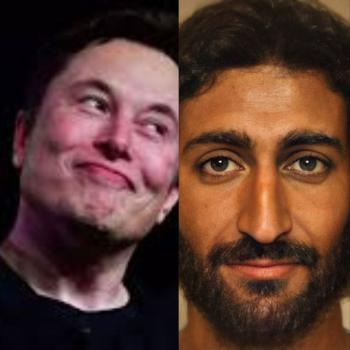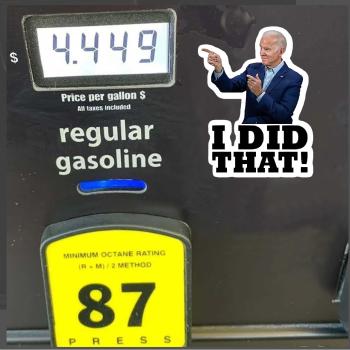I recently had the pleasure of visiting Washington D.C. with almost 100 8th grade students. While in the nation’s capital we experienced a great deal of exploring. We crammed at least a week’s worth of sightseeing into three exhausting but rewarding days. I have been to D.C. several times but experiencing it as a teacher with my students present seemed to heighten my senses to some of the landmarks that would normally seem totally familiar. With fresh perspective, I came to a deeper appreciation of a few of the monuments and the symbolism, whether intended or just my interpretation, contained within their structures, positions, and juxtapositions.
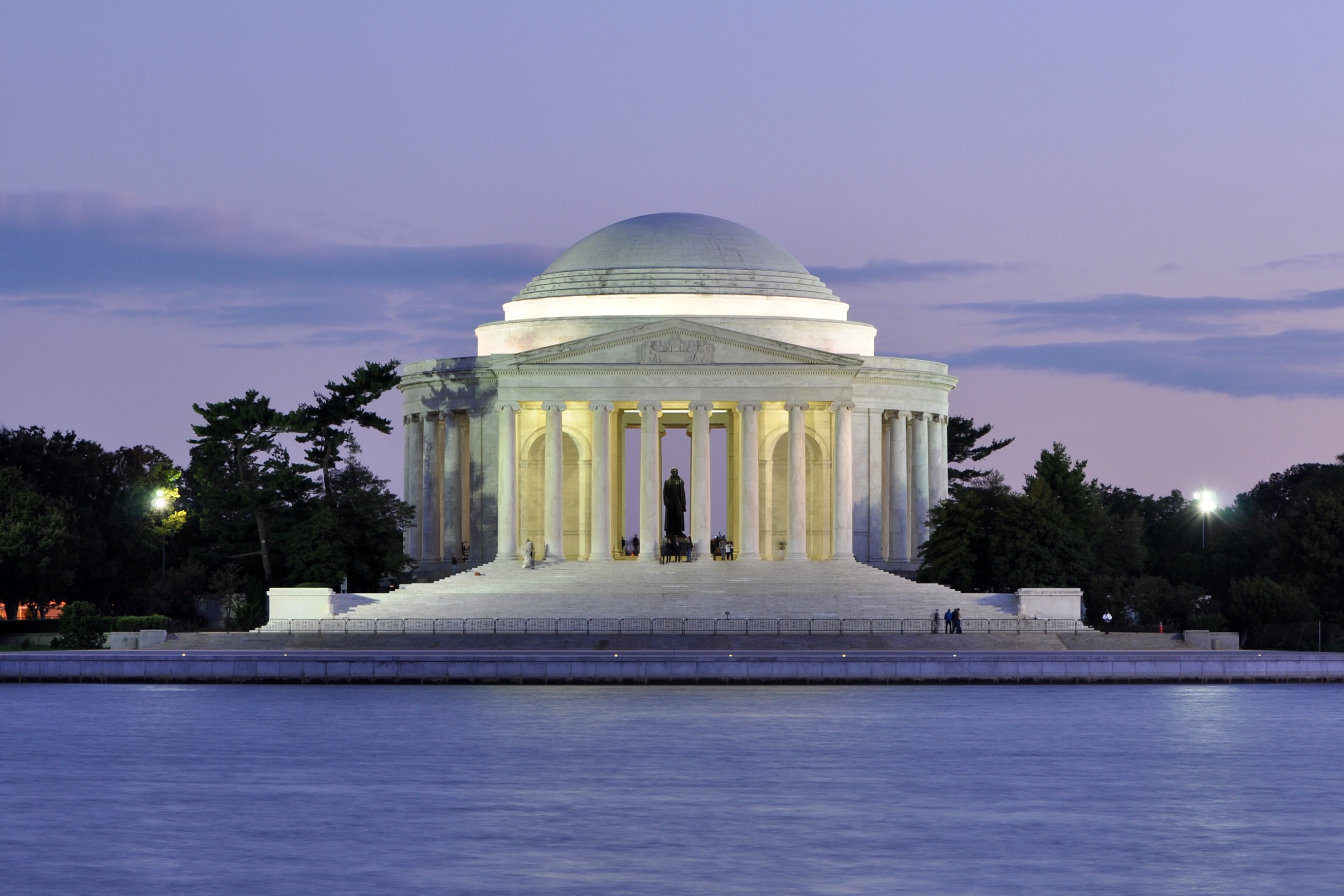
I will begin with the Jefferson Memorial. This is my favorite monument or memorial in D.C. and my favorite spot in the city in general. I am enamored with this memorial for many reasons. For one, Jefferson has been a lifelong puzzle for me to try to figure out. I have studied him for more than 30 years and have taught about him for 15 years and I am still not at all sure what to think about him. There is much to admire about the man who, in my opinion, was our most brilliant president. But there are also many troublesome aspects that are hard to ignore. You can read more of my thoughts on Jefferson here. This trip to the Jefferson Memorial was different for me. This time it began to dawn on me why I like this monument above all the others. This monument is simply a perfect representation of the man it memorializes, both in its structure and in its position on (or rather off) the National Mall. The Jefferson Memorial is, architecturally, exactly what Jefferson himself would have designed. It has all the elements that he tended to admire in architecture and that he included in the buildings he designed, including his home, Monticello. It is elegant and impressive without being too audacious or showy. This encapsulates the way Jefferson attempted to present himself and his own home. But beyond that, the position of the memorial in relation to the rest of the city is perfect symbolism as well. Consider the layout of the National Mall and study the photo below.
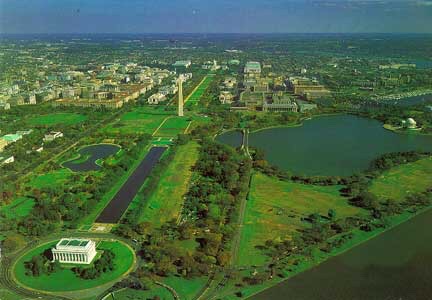
The Mall is over two miles long, starting at the U.S. Capitol and ending at the Lincoln Memorial. The three main features are in perfect alignment, anchored by the 555 foot tall obelisk of the Washington Monument as the centerpiece. On one end, the seat of our government, then the monument to the father of the country, rounded out by the iconic memorial to the savior of our union. A perfect alignment, straight and proper…scripted…molded. Then there is the Jefferson Memorial. You can see it on the extreme right edge of the picuture tucked away by itself on the edge of the tidal basin. Jefferson didn’t fit the mold. He was different. He worked under Washington but certainly didn’t fall in line with him on many issues. In fact, he often felt pushed to the side in the cabinet meetings in favor of the Federalists, such as Alexander Hamilton. That led him in another direction and his ideas became the basis for the anti-federalist party, the Democratic-Republicans. I love that Jefferson’s memorial is off to the side and not in line. It seems quite fitting and proper. That was just one of the things that became clear to me on my recent trip.
Another revelation that I had was also related to the Jefferson Memorial, but only in its juxtaposition with another memorial across the tidal basin from it, the Martin Luther King Jr. Memorial.
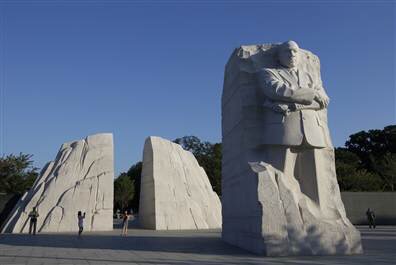
This was my first time to visit this particular memorial. It is most notable for the incredible King quotes etched into the stone walls that mark its perimeters. Then, once you have strolled past these inspiring quotes, you come to the back of the memorial to see a large rock carving of MLK facing away from his memorial, arms crossed, actually looking a little annoyed. As I studied his countenance, it dawned on me that he is directly facing the Jefferson Memorial, perhaps half a mile away, straight across the open water of the tidal basin. The thought occurred to me that it seems MLK might be a little disappointed in Jefferson. It was as if he was saying, “Really, TJ? All men are created equal? Yet, even as you wrote those words you held hundreds of people as slaves? And nearly two centuries later I had to give up my life in the struggle to gain equal rights for all? Really, TJ?…really?”
I have no idea if the positioning of the MLK carving was done intentionally to make this point, but whether it was on purpose or not, the point was driven home to me that day.
One final thought that hit me while we traversed the National Mall centers on the focal point, the sky-piercing Washington Monument. Study the picture below. Can you see that the bottom quarter of the monument is a noticeably different shade than the top?
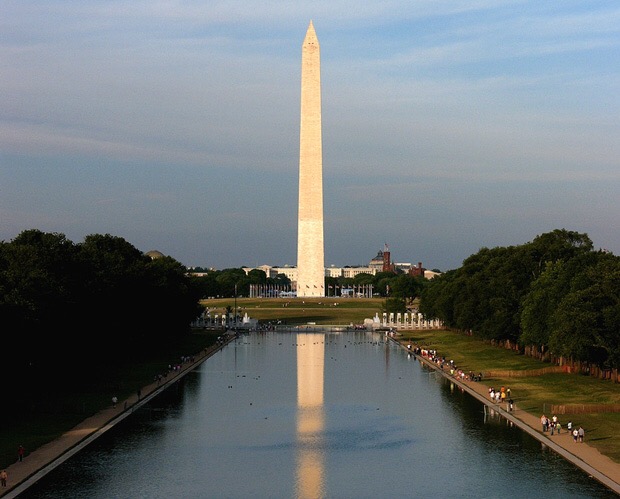
There is a very logical reason for that. The monument was not finished all at once. During the Civil War, the funds ran out and the project was abandoned for many years. For the Civil War years and about a decade after, the Washington Monument was a rather ugly eyesore as shown below.
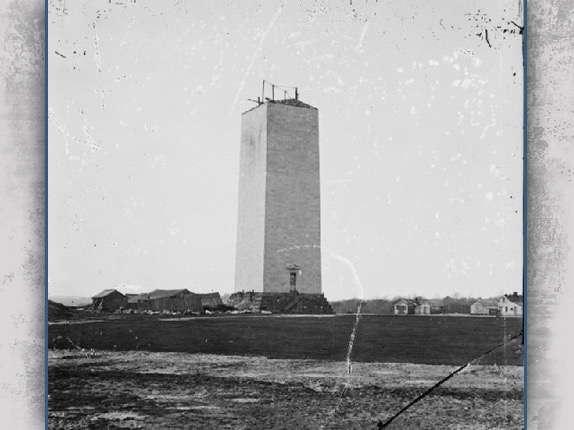
When the funds were finally available to finish the project in the late 1870’s, the quarry from which the marble had originally been obtained had closed. The rest of the marble had to be quarried in another location and it was not a perfect match to the original. The finished product is obviously quite impressive, yet, it is also flawed. There is no hiding the fact that there is a clear line of different colors on the monument. As I sat taking in this sight, it occurred to me that this, too, seems fitting and proper. I began to see that line as a timeline. The lower quarter of the obelisk is whiter in color than the top. I see that as the antebellum America. A time of great growth and huge ambition, but a time tainted by the stigma of slavery. To me, that white skin of the bottom portion of the monument represents the white skin of those who abused their power to keep an entire race of Americans disenfranchised for as long as they could until four years of hellish war forced a bloody closure to that chapter of our history. The rest of the monument is a shade darker in color. It was a long and hard climb to achieve a harmonious blend that Thomas Jefferson alluded to in our founding document. He was never able to live up to his own lofty ideals. We certainly haven’t gotten there either, but we are closer to that goal. Let us look to the these monuments as a reminder of who we were, who we are, and who we want to be.



